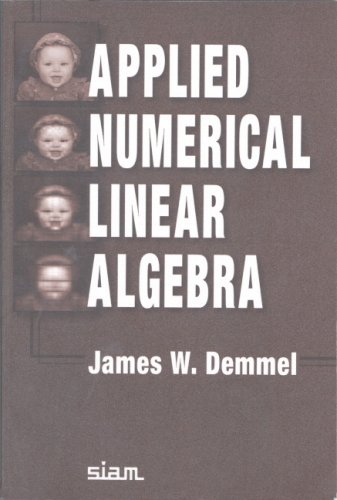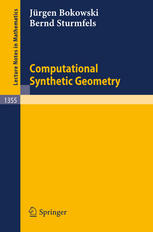James W. Demmel9780898713893, 0898713897
If you are looking for a textbook that – teaches state-of-the-art techniques for solving linear algebra problems, – covers the most important methods for dense and sparse problems, – presents both the mathematical background and good software techniques, – is self-contained, assuming only a good undergraduate background in linear algebra,
then this is the book for you.
Algorithms are derived in a mathematically illuminating way, including condition numbers and error bounds. Direct and iterative algorithms, suitable for dense and sparse matrices, are discussed. Algorithm design for modern computer architectures, where moving data is often more expensive than arithmetic operations, is discussed in detail, using LAPACK as an illustration. There are many numerical examples throughout the text and in the problems at the ends of chapters, most of which are written in Matlab and are freely available on the Web.
Material either not available elsewhere, or presented quite differently in other textbooks, includes – a discussion of the impact of modern cache-based computer memories on algorithm design; – frequent recommendations and pointers in the text to the best software currently available, including a detailed performance comparison of state-of-the-art software for eigenvalue and least squares problems, and a description of sparse direct solvers for serial and parallel machines; – a discussion of iterative methods ranging from Jacobi’s method to multigrid and domain decomposition, with performance comparisons on a model problem; – a great deal of Matlab-based software, available on the Web, which either implements algorithms presented in the book, produces the figures in the book, or is used in homework problems; – numerical examples drawn from fields ranging from mechanical vibrations to computational geometry; – high-accuracy algorithms for solving linear systems and eigenvalue problems, along with tighter “relative” error bounds; – dynamical systems interpretations of some eigenvalue algorithms.
Demmel discusses several current research topics, making students aware of both the lively research taking place and connections to other parts of numerical analysis, mathematics, and computer science. Some of this material is developed in questions at the end of each chapter, which are marked Easy, Medium, or Hard according to their difficulty. Some questions are straightforward, supplying proofs of lemmas used in the text. Others are more difficult theoretical or computing problems. Questions involving significant amounts of programming are marked Programming. The computing questions mainly involve Matlab programming, and others involve retrieving, using, and perhaps modifying LAPACK code from NETLIB.
Table of contents :
APPLIED NUMERICAL LINEAR ALGEBRA……Page 1
Contents……Page 6
Preface……Page 10
1 Introduction……Page 14
2 Linear Equation Solving……Page 44
3 Linear Least Squares Problems……Page 114
4 Nonsymmetric Eigenvalue Problems……Page 152
5 The Symmetric Eigenproblem and Singular Value Decomposition……Page 208
6 Iterative Methods for Linear Systems……Page 278
7 Iterative Methods for Eigenvalue Problems……Page 374
Bibliography……Page 402
Index……Page 422






Reviews
There are no reviews yet.